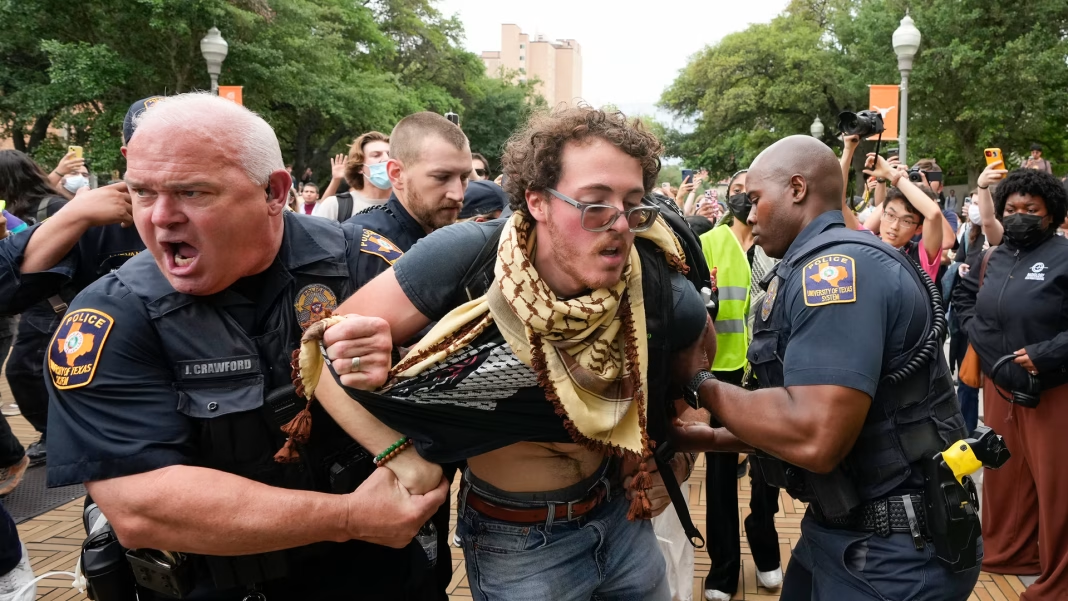In December 2019, Delhi’s Shaheen Bagh became a symbol of violence. The protests, lasting three months, were marked by fervent opposition to the CAA, coupled with accusations of Hinduphobia and anti-India sentiments. Fast forward several years later, and similar protest encampments reminiscent of Shaheen Bagh are cropping up not in India, but across the United States, amidst the Israel-Hamas conflict.
Shaheen Bagh in US
The recent wave of protests in US universities, predominantly led by pro-Palestine students, has drawn parallels to the fervor witnessed at Shaheen Bagh. These demonstrations advocate for the Boycott, Divestment, and Sanctions (BDS) movement against Israel’s policies towards Palestinians. However, unlike in India, where protests faced stern governmental responses, the US administration’s reaction has been markedly different.
As US universities grapple with pro-Palestine encampments, the response from authorities has been swift and forceful. Arrests of protestors, including prominent figures such as Isra Hirsi, daughter of Rep. Ilhan Omar, have been made. Yet, this stands in stark contrast to the US government’s stance on similar protests within India.
Similarities in Protesting
In both contexts, universities have become battlegrounds for political expression, mirroring ideologies akin to those seen in Jawaharlal Nehru University (JNU) protests in India. The adoption of slogans like “Azadi,” synonymous with JNU’s activism, further highlights the transnational nature of these movements.
What is particularly noteworthy is the presence of Indian-origin students actively participating in the pro-Palestine protests. However, this involvement also raises concerns, as exemplified by the case of Riddhi Patel, an individual with anti-Hindu sentiments and affiliations with Hamas.
US Handling Shaheen Bagh
The handling of these protests by the US authorities stands in stark contrast to their criticism of India’s response to similar demonstrations. It is characterized by mass arrests and condemnation. The US State Department’s recent report on human rights practices in India, which downplays actions against individuals like Umar Khalid while emphasizing the importance of human rights, highlights this double standard.
Moreover, Israeli Prime Minister Benjamin Netanyahu’s comparison of US university protests to 1930s Nazi activities underscores the gravity of the situation. The rising antisemitism and anti-Israel sentiments on American campuses further fuel the debate. Where is the line between freedom of expression versus hate speech.
Difference In Handling
In essence, the discrepancy in how protests are addressed globally, particularly concerning similar ideologies. It raises questions about the consistency and integrity of governments’ stances on human rights and freedom of expression. The juxtaposition of US responses to protests within its borders and those abroad, like in India, underscores the inherent hypocrisy. The navigation of political dissent and upholding democratic values.


